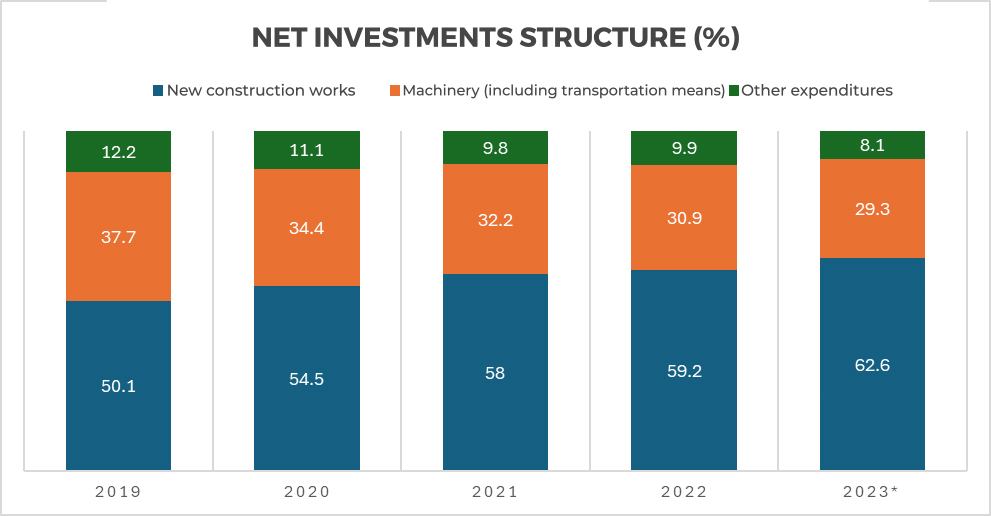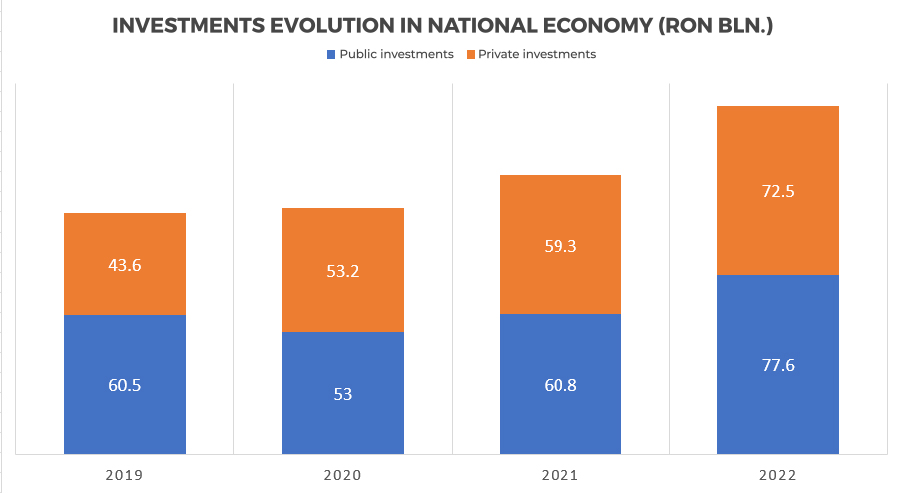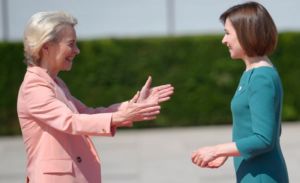Post-pandemic years are characterized by economies’ efforts to recover after the fall in 2020 and 2021, as well as by governments’ determination to make up for lost time and the funds swallowed by the health crisis.
The evolution of Romanian investments – public and private – with the year before the pandemic as point of reference, the extent of economic recovery, and changes occurred in the structure of investments by economy sector.
Net investments in the national economy registered a strong increase in the post-pandemic period, reaching RON 118.5 billion after the first nine months of 2023, a 14% rise in volume compared to the same period of 2022.
The strong hike of new construction works stands out among big categories, reaching almost 63% of the total in Q3 of 2023, according to latest data provided by the NIS (INS). This is due largely to public investments in infrastructure, financed with European funds.
State and private investments in infrastructure and machinery
An overview considering 3 indices reveals stagnation or even a drop in terms of investments in machinery and means of transportation.
In the first nine months of 2023, public expenditure for investments reached RON 54 billion, registering a 40% increase compared with the same period of the previous year. According to data provided by the Ministry of Finances, the share of investments financed with post-joining external nonrefundable funds reached 58.53% of total public expenditure for investments.
In the graph below, “other expenditures (for investments)” refers mainly to investments in digitalization and activity optimization over the last years.
Public / private investments – before and after the pandemic
In 2019, the year before the Covid19 pandemic outbreak, construction works represented only half of total investments in the national economy.
While machinery, including means of transportation, represented nearly 38% of the total, only to drop to 29% in 2023, registering a significant decrease of 9 percentage points.
Moreover, the increase of large construction works in infrastructure is reflected by public expenditure in the total of investments made in 2022 and 2023 compared to previous years.
Below, public and private investments in RON billion – current prices:
The comparison between private and public investments for the first nine months of 2023 is not relevant, since the last quarter of the year sees the most deductions for public construction works. Below, the quarterly balance of these investments:
(*2023 – 9 months)
Investments by sector and economic activity – production branches drop
The structure of sums allocated to national economic activities showed falling shares for production branches:
from 27.7% to 25.8% for industry, from 5.8% to only 3.5% for agriculture (an important alarm signal if we consider the ever-pronounced commercial food deficit), and from 36.5% to 35,9% for construction.
(* 2023* – the status for the first 3 quarters)
The structure of investments in national economy by sector has undergone major changes. Subsequently, the share of constructions increased to nearly 45% of the total, from 28% in 2019, at the expense of other economic branches. Industry dropped to a little over 20% in five years, from over 28%, while commerce and services dropped below 20% from 23% in 2019.
Agriculture investments, although lower than in other sectors, remained almost constant, varying between 3.9% and 3.2% of the total over the last years.
According to the definition accepted within the European Union, represent expenses intended for creating new fixed assets, the development, modernization and reconstruction of existing ones, as well as the value of services connected to the transfer of ownership of existing fixed assets and of land taken over with payment from other units or from the population (notary fees, commissions, transport and handling expenses, etc).
Investments contribution to GDP increase
Investments represented an important growth driver in 2023, especially during the second half of the year, with consumption slowing amid a decline of purchase power due to inflation hike.
Romania’s GDP was 2.2% higher in the first nine months of 2023, against the similar period of 2022, according to data provided by the National Institute of Statistics (NIS). According to provisional data, agriculture and constructions are among the largest contributors to economic increase.
Consequently, constructions contributed 0.3% to the GDP increase, the same as agriculture.
The trend is estimated to maintain in 2024, given a slower increase of population consumption and higher public expenditure for investments, of approximately 7% of GDP, according to budget laws for this year.
***













